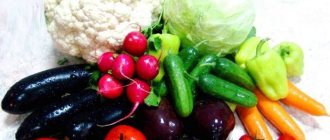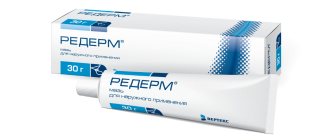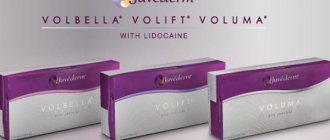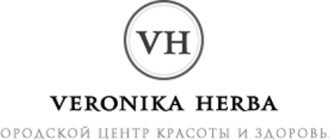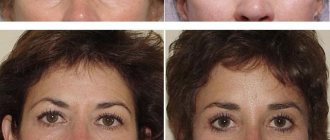Reading time 7 min.
Oddly enough, acne is a problem that occurs not only during adolescence. There are people who are over thirty and still struggle with recurrent or constant skin rashes. All this contributes a lot to stress (after all, as soon as pimples appear, we immediately think about how to get rid of them) and spending money on “miracle” lotions and ointments, which, despite the promises of manufacturers, usually dry out the skin rather than help solve the problem.
Herbs for acne. Top 10 most effective
Fortunately, there are alternative methods, such as natural treatments in the form of various products from nature (skin tonics, creams or masks).
Care and cosmetics for acne-prone skin
Skin problems are largely related to improper care and especially cleansing. Each skin type requires different care, so if you don't take into account your individual needs, using the wrong products can lead to breakouts and breakouts.
Thus, acne can occur due to excessive activity of the sebaceous glands, in turn, excess sebum clogs the pores, which provokes inflammation. Therefore, for acne, thoroughly cleansing the skin at least twice a day is of great importance: morning and evening. Medications recommended by your doctor can also be included in your daily skin care regimen. However, this is a last resort option and should be used if all other methods fail or you need a professional eye.
Cosmetics designed for problem skin are designed to control sebum production and therefore often contain alcohol. They should also have anti-inflammatory, antibacterial effects and at the same time provide the necessary hydration. However, it is rare that any industrial product does not contain chemical preservatives and fragrances, which is undesirable even for healthy skin. At the same time, the herbs suggested below have all the desired effects and are completely safe.
Herbs for acne and other skin problems
Herbs for acne - will they help and at what stage?
According to dermatologists, folk recipes can be used at stages 1 and 2 of acne. More severe degrees are characterized by pronounced and severe symptoms, which must be dealt with comprehensively, however, home remedies can be used as an auxiliary therapy.
The cause of the rash must also be taken into account. Local treatment is indicated for superficial infection, disruption of the sebaceous glands, or reaction to low-quality cosmetics. Drinking herbs for acne is recommended when additional cleansing of the body is necessary.
In any case, it is recommended to visit a doctor and find out what caused the disease. It is possible that it will be possible to get by only with natural remedies, but to select a truly suitable plant, you need to know the cause of the disease.
Calendula
Surely you know that this beautiful and healing decoration of gardens is valued by many gardeners for the unpretentiousness and beauty of orange flowers. As a remedy, calendula gently cleanses the skin, and thanks to its anti-inflammatory effect, it reduces the risk of acne inflammation and, in addition, treats existing painful pimples or promotes their healing. You will also appreciate the healing effects of calendula on eczema, which can be a lifelong problem.
1. Calendula
Recipe! Pour two tablespoons of calendula into 0.5 liters of hot water and let it brew for 30 minutes, then strain. Can be used as a classic tonic or added to the bath.
Herbs for treating acne. TOP 10
Most recipes based on beneficial plants include recommendations for proper local treatment of inflammation and affected areas. However, it is also useful to take herbs for acne internally. Such decoctions and infusions cleanse the body of toxins, normalize the functioning of the gastrointestinal tract, which often becomes a prerequisite for acne on the face and body, and more intensively suppress the growth and reproduction of pathogenic bacteria and microbes.
Celandine
The weed, growing everywhere in the middle zone, has a telling name. Bright orange celandine juice is used to treat various dermatological diseases and benign formations on the skin. With the help of this herb you can cope with swelling, speed up cell regeneration, and dry out purulent rashes.
Methods for preparing acne remedies:
- Lotion. Grind fresh herbs in a meat grinder. Take 10 g and pour 500 ml of boiling water over the raw material. Leave until completely cool. Pass through gauze and treat affected areas. After the composition has dried, apply it again;
- Tincture. Chop the green parts of the celandine and take 6 tablespoons. Mash the pulp of 4 peeled cucumbers to a puree. Combine the ingredients and pour 0.5 liters of high-quality vodka. Keep in a darkened room for 2 weeks. Apply to rashes on face morning and evening.
Series
The main beneficial property of the string is the ability to accelerate cellular regeneration and heal damaged tissue, which is why the plant is often included in the herbal treatment of acne. In addition, with its help, pores are cleaned and narrowed, the appearance of vascular networks is prevented, and the activity of secretory glands is regulated.
Recipes for products with a series:
- Healing drink. Place 15 g of dried herb in a small saucepan. Pour 200 ml of water and place in a water bath. After 10 minutes, remove, cool and pass through a cloth. Drink ½ glass 3 times a day;
- Mask. Pour a mug of non-carbonated mineral water over 2 tablespoons of the plant. Bring to a boil and immediately remove from heat. Once cooled, squeeze out the liquid and set aside the boiled herb. Use the paste as a mask, which must be left on for 20 minutes. You need to cleanse your face with a fresh decoction.
Chamomile
Chamomile is a modest plant suitable for the most “difficult” and sensitive dermis. The inflorescences have a bactericidal and protective effect, accelerate the production of collagen and elastin, prevent and soothe allergic reactions.
- Infusion for washing. Place 2 tablespoons in a mug and fill to the brim with kmptyak. Wait for the product to cool and pass through a fine sieve or cheesecloth. Divide the liquid into 2 portions, freeze one of them in ice cube trays. Directions for use: on even days, wash your face with a warm mixture in the morning, on odd days, wipe the dermis with ice cubes;
- Lotions for subcutaneous acne. Prepare the infusion according to the previous recipe. Mix it with 100 ml of alcohol and 4 drops of boric acid. Grind 2 tablets of Aspirin and Analgin to a powder. Pour into the base and stir. Soak a cloth with the product and apply to inflamed areas on the face in the morning and at night. Hold for 5 minutes.
Calendula
When choosing herbs for acne on the face, some people opt for ready-made pharmaceutical products containing them. The most famous is an alcohol tincture of marigolds, however, it is recommended to use it only for oily skin.
Those with sensitive dermis can also take advantage of the miraculous properties of calendula by preparing an ointment or decoction. The plant is useful for preventing acne, combating swelling, irritation, and large ulcers.
- Ointment. Grind 5 inflorescences into powder. Mix them with 20 g of Vaseline. Melt 100 g lard and add to the mixture. Store the composition in the refrigerator. Lubricate inflamed areas as necessary;
- Infusion. Place 30 g of flowers in a saucepan and pour in 0.5 liters of boiling water. Cook over low heat for 15 minutes. Then close tightly and leave for 45 minutes. Filter through 3-4 layers of fabric. Wash your face in the morning.
Sage
Sage is a medicinal herb that allows you to quickly cope with pain, swelling, and spots from irritation.
Infusions with it effectively cleanse impurities, kill bacteria and germs, normalize the production of sebum, and promote the rapid maturation of pimples.
- Infusion. Pour 5 tablespoons of sage into 0.5 liters of boiling water. Wrap the dishes in thick cloth and leave for 3 hours. Strain and use as a cleanser or for making cosmetic ice;
- Mask. Prepare an infusion. Use it to dilute potato starch to obtain a liquid paste. Apply the mixture to your face and keep the mask on for half an hour. Wash thoroughly.
Aloe
Few acne herbs are effective in the late stage of acne, when the skin is covered with conglomerates of papules and pustules. Aloe is one of the few plants that alleviates even stage 4 acne.
With the help of gel and juice, you can relieve pain, activate blood flow, and effectively heal complex lesions caused by cysts.
- Application. Cut off the largest leaf located at the roots from the bush. Remove the prickly sides and carefully remove the skin. Cut a piece 1-2 cm in size. Using a patch, attach it to a cystic, pustular formation, or subcutaneous pimple. Leave the compress overnight;
- Alcohol tincture. You will need 120 ml of agave gel. Dilute it with a glass of alcohol. Pour into a glass bottle and keep on the refrigerator door. In the morning and before bed, soak a cotton swab in the mixture and treat the affected areas.
St. John's wort
St. John's wort is effective for combating acne localized not only on the face, but also on the body. The plant cleanses the skin well, suppresses inflammatory processes, reduces redness, and prevents new rashes.
- Vodka tincture. Place 15 g of crushed dry raw materials in a dark glass bottle filled with 1.5 glasses of vodka. Seal, place in a dark place, shake daily. Wipe areas covered with ulcers. To tighten pores, dilute with water and apply to entire face;
- Ice. Prepare a decoction of St. John's wort from the ratio: a spoonful of raw materials per glass of water. Strain the liquid when it has cooled to a comfortable temperature. Add 15 drops of tocopherol from the ampoule and a teaspoon of peach oil. Pour the composition into ice trays. In the evenings, wipe your face with cubes, following the massage lines.
Nettle
When you need to choose herbs for acne that appears on dry or sensitive skin, you should definitely remember about nettle. The plant rejuvenates, suppresses the activity of infectious agents, and has antiseptic properties.
Also, with the help of nettle, you can reduce the symptoms of inflammation and improve the functioning of the secretion glands.
- Nettle infusion with flowers. Take a tablespoon of dried leaves, rose petals and flowers of chamomile. Pour the mixture with boiling water in a volume of 250 ml. After 20 minutes, filter thoroughly and cool completely. Use the boiled herbal mixture as a face mask, make cosmetic ice from the liquid;
- Nettle drink. Pour 30 g of dry raw materials into 400 ml of boiling water. Leave for 2 hours and pass through a cloth. Dosage regimen: take 100 ml orally before each meal.
Dandelion
Dandelion helps whiten the skin, smooth out the first wrinkles, reduce swelling and redness around papules, and draw out purulent contents.
To combat acne, use the roots and flowering parts of dandelion, which are prepared in water or alcohol.
- Tincture. Fill a 250 ml bottle with alcohol. Add a few chopped dandelion flowers. Leave for 10 days, shaking every 24 hours. Add to tonics and creams or dilute with water and make lotions;
- Drinking decoction. Boil a tablespoon of plant roots in a glass of water. Keep on fire for a quarter of an hour. Cool for 45 minutes and pass through cheesecloth. Drink a third of a scan three times a day before meals.
Burdock
A weed with large leaves is easy to find, and its beneficial properties rival even rarer herbs. Remedies with burdock eliminate swelling, relieve irritation and inflamed redness of the face, strengthen local immunity, and improve the condition of subcutaneous capillaries.
- Alcohol tincture. You will need leaves and roots, which should be washed and minced in a meat grinder or chopped in a blender. Pour 25 g of the mixture with a glass of alcohol. Leave for 100 days. An alcohol-containing drug is suitable for enriching homemade acne cosmetics. For 10 g of composition you will need 8 drops.
- Drinking from burdock root. Boil 0.5 liters of water, add 15 g of dried and ground root. Cook for 10 minutes. Cool naturally. Filter and drink 100 ml 4 times a day.
Chamomile
Chamomile is able to absorb excess sebum, which narrows pores and, in addition, when cleansing the skin, has an anti-inflammatory effect, soothes and promotes better healing of acne. As an infusion, chamomile relaxes and aids digestion (poor digestion or significant stress can cause an unhealthy complexion).
2. Chamomile
Recipe! Pour two tablespoons of chamomile into 0.5 liters of boiling water and let it brew for 30 minutes. Then strain and wipe the skin with warm broth or make a compress.
Decoctions for internal consumption
What herbs are best to use? Almost everything, you just need to apply them comprehensively: internally and externally.
- Verbena. Helps with boils, rashes, boils, has a blood purifying effect. Infuse for 1 table. spoon of herb in boiling water for 60 minutes, drink 4 times a day, 2 tablespoons. spoons;
- Wild strawberry, violet, string, white damselfish. Take an equal portion of each type, mix and pour boiling water. Leave for 1 hour, strain and add honey to taste. Drink like tea;
- Flax seeds, birch leaves, nettle, buckthorn bark. Take 1 tbsp. spoon of each herb, mix, infuse in 250 gr. boiling water Drink the infusion 3-4 times in one day;
- Buckthorn bark, stinging nettle, toadflax, birch leaves - 2 tbsp. spoons, pour boiling water (250 g each) in two different containers. Drink half a glass 4 times a day;
- Peel burdock root, St. John's wort, dandelion root, shamrock, chicory root - 3 tablespoons each. spoons, pour 4 cups. boiling water, leave for 2 hours. Drink 1 glass 4 times a day;
- Elderberry flowers, buckthorn bark, licorice root, fennel fruits, birch leaves, tricolor violet - in equal parts, pour 250 g. boiling water, leave for 2 hours, drink 3 tablespoons. spoons 3 times a day.
Bactericidal, anti-inflammatory, blood purifying properties begin their work through internal organs - intestines, liver, kidneys. As a result, acne disappears quickly and without a trace.
Burdock
Burdock or burdock is excellent for combating acne, eczema, psoriasis, shingles, abscesses and boils, fungal infections, ulcers and skin irritations. It also works well on excess seborrhea, both on the body and scalp, soothing sensitive areas and regulating sebum secretion. To prepare tinctures or decoctions, roots are often used and leaves and fruits are less often used.
5. Burdock
Nettle
6. Nettle
Often disliked and considered a weed, nettle is actually a particularly effective medicinal plant. Diuretic, anti-inflammatory, antibacterial, antirheumatic, natural antioxidant effect and the list of its advantages does not end there! Like burdock, the cleansing effect of nettle is especially appreciated for oily skin. It can be used in the form of compresses or infusion.
Reviews
Like all natural remedies, herbal tinctures and decoctions receive both positive and negative reviews. However, traditional methods of treating skin are firmly rooted in consciousness, which is why medicinal plants are most often used to treat acne.
Chamomile, calendula and chamomile have been known since ancient times as plants that help with rashes, so most users choose them. Other herbs are also popular, however, comments confirm that they can be limited only to periodic rashes and single pimples. Severely affected skin must be treated with more serious methods.
Pansies
8. Pansies
Wild pansies, like nettles, have diuretic and draining properties that help the body get rid of toxins. The anti-inflammatory effect is due to the content of a small amount of salicylic acid (a precursor to aspirin). It is known that in the form of compresses, decoctions or infusions, pansies treat acne and alleviate eczema.
How to identify the cause
Experts strongly do not recommend self-medication when pustules and acne appear. Under no circumstances should you squeeze pimples. Blood poisoning, abscess, large abscesses, boils are a direct consequence of not taking your health seriously. Touching acne with unclean hands leads to the appearance of new lesions, which are more difficult to treat. Superficial treatment with special means should go along with complex therapy prescribed by a doctor. The specialist conducts a detailed examination of the rash, determines the location, and prescribes urine, feces, and blood tests. Based on the research results, drug therapy, physiotherapy, and the use of external agents are prescribed.
Green tea
9. Green Tea
Green tea is well known for its anti-aging benefits due to its antioxidant properties. Brewed tea leaves can be used as compresses to get rid of dark circles under the eyes. Their effectiveness will be even stronger if the compresses are left in the refrigerator for several hours before use. Green tea is also a valuable ally for oily skin thanks to its astringent properties, which naturally tighten pores.
Aloe vera
10. Aloe Vera
Aloe vera is a plant known for its refreshing and moisturizing properties. It also has anti-inflammatory and antibacterial properties that help fight mild skin problems as well as sunburn. The gel obtained from the fleshy leaves of aloe can be purchased at the pharmacy or grown at home! The numerous benefits of aloe make it a universal remedy for the care of both dry and oily skin. By the way, the gel does not leave a “greasy” film on the face.
Why do acne appear?
For everyone, acne and redness are a very unpleasant situation. Most of us, especially women, make attempts to disguise an aesthetic defect. But experienced dermatologists say that the problem needs to be treated from the inside. There are many reasons why it occurs. These include:
- infectious diseases;
- long-term use of antibiotics;
- inflammatory processes in the gastrointestinal tract;
- dysbacteriosis;
- poisoning;
- hormonal imbalance;
- ARVI, ARZ.
The condition of the skin also depends on external factors: climatic conditions, work in hazardous industries, prolonged exposure to the cold, sun, non-compliance with banal hygiene standards, low-quality cosmetics.
Universal recipes suitable for acne-prone skin care
• Homemade herbal lotion
There is nothing easier than mixing the above herbs, pouring 2 liters of boiling water, letting it brew for 10 minutes, straining and getting an excellent tonic for the skin! You can apply the infusion with a cotton swab or as a poultice.
• Steam bath with herbs
The steam bath opens the pores and deeply cleanses the skin. Mix mint, chamomile, sage and nettle, put two tablespoons of herbal mixture in a container, pour 2 liters of boiling water, let stand for 10 minutes. Then all you have to do is lean over the container, cover your head with a towel, and inhale the fragrant mixture through your nose for about 10 minutes. Herbs can be changed. If you have fairly problematic skin, add chamomile, sage, calendula, plantain and elderberry to the water.
Peeling at home
Pimples and ulcers occur due to pollution and clogged pores. In order not to lead to inflammatory processes, it is necessary to cleanse acne and blackheads. To do this, you need to prepare scrubs with your own hands that remove dead epithelium and cleanse pores.
- Ground coffee. Before the procedure, thoroughly wash your neck and décolleté area. The grounds from drinking coffee without sugar are used. Mix the pulp with foam, rub with light massage movements for about 5 minutes. Rinse and apply nourishing. cream;
- Baking soda with soap and cottage cheese. The method cleanses pores and has a whitening effect. 1 teaspoon Sprinkle soda onto baby soap (laundry soap will do), make a paste, mix with cottage cheese and rub with light massage movements for 3-5 minutes. Do not overdo it, peeling should be gentle, not irritate or scratch.
